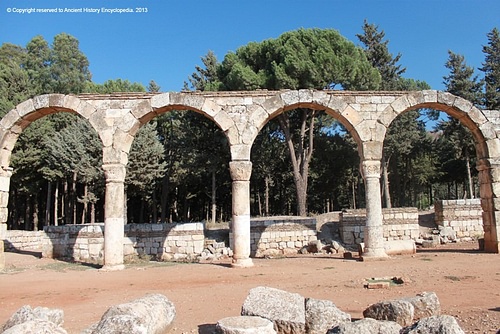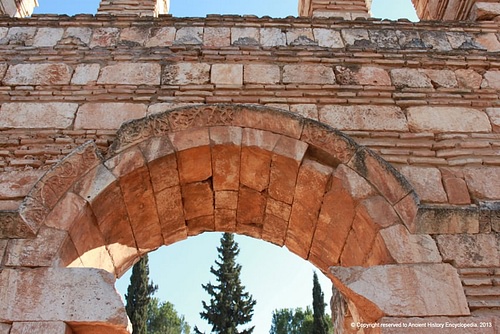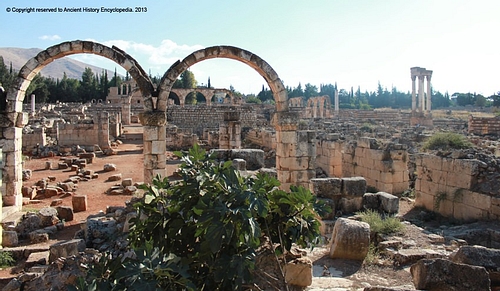
The city of Anjar stands as the single Umayyad site in Lebanon, located near the Litani River and 58 km from the capital of Beirut. Anjar was founded during the Umayyad period under Caliph Walid ibn 'Abd al-Malak (r. 705-715 CE) and takes its name from the Arabic term 'ayn al-jaar, meaning water from the rock - a reference to the streams that flow from adjacent Lebanon and the anti-Lebanon mountain range.
Historical Overview
The city prospered over a relatively short period of 20-30 years, continuing under Walid's son, Caliph Ibrahim (r. 744 CE). It was in 744 CE that the Abbasids, expanding their power in a takeover of the Islamic caliphate, defeated Ibrahim and overran the city. The raid left Anjar devastated, ushering in a long period of disuse and abandonment.
The ruins of Anjar provide testimony to the Umayyad civilization, as they are precisely dated in inscriptions found throughout the enclosure. The site reveals a long period of early occupation by the Greeks and Romans reflected in early Christian buildings which date back to c. 395 CE.
Anjar was an inland commercial centre at the crossroads of two important routes: one which led from Beirut to Damascus and the other which crossed the Bekaa valley, leading from Homs to Tiberiade. It prospered as a trading city, as it was strategically situated at this crux between the north-south and east-west trade routes of the Arabian Peninsula.
The city of Anjar, while never built up to its fullest potential and, rather, abandoned by the Umayyads after a nascent 30 years, saw only a brief golden age. At its peak, Anjar housed more than 600 market arcades separated by columns in the typical Roman-style, as well as bathhouses, two palaces, and a mosque.
Vestiges of the city of Anjar constitute a unique example of 8th-century CE urban planning carried out at the beginning of the Islamic period. The nature of its ruins marks an evolution over time from a proto-Byzantine culture to the early development of Islamic art - evidenced through the presence of various construction techniques - and architectonic and decorative elements captured in its monuments.
Architectural Layout
Anjar is a fortified city surrounded by walls and 40 towers spread across a rectangular area of 385 x 350 metres. The city structure is dominated by gates flanked by porticos, and is divided into four equal quadrants by a north-south axis and a shorter east-west axis superposed above the main sewage collectors.
Public and private residential buildings are laid out according to a structured plan: the mosque and the palace of the Caliph in the southeast quarter occupies the highest elevated part of the site, while the small palaces (harems) and bathhouses are located in the northeast quarter, facilitating the proper evacuation of wastewater. Special service, craft areas, and living areas are distributed in the northwest and southwest quarters.
The ruins reveal spectacular vestiges of a monumental tetrapylon (four-way arch), as well as by the walls and colonnades of the Umayyad palace, three out of four levels of which have been preserved. These structures incorporate decorative or architectonic elements of the Roman era, but are also noteworthy for the exceptional embellishing techniques of contemporary decor within the construction.








